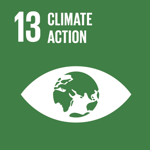Technological and Political Strategies to Reduce Vulnerability to CC in the Southern Cone
 Uruguay
Uruguay
 Argentina
Argentina
 Bolivia
Bolivia
 Brazil
Brazil
 Chile
Chile
 Mexico
Mexico
 Paraguay
Paraguay
 United States
United States
Executive Summary
The Southern Cone of Latin America is one of the main food-producing regions of the world. Agricultural expansion in the last 50 years has been very consistent and significant, having increased the cultivation area of rain-fed grains by 65 million hectares, yields at a rate of 3.1% per year and production by 275 million tons. In general, agriculture expands on soils with less agricultural aptitude (less water storage capacity, greater risk of erosion). Simultaneously, an intensification in the use of more fragile ecosystems occurs, replacing native grasslands with cultivated pastures or annual crops, such as soybeans. If the periods 1985-89 are compared with 2002-04, a reduction of 9% is detected in the grassland area. In the same period, there is an increase of 18% in land under agricultural crops, and 29% in the forested area (commercial plantations). After 2004, the agricultural expansion led by soybean cultivation continues. Added to this situation is climate change and variability, which can have two main effects: variability and loss of yields and greater soil degradation due to erosion.
The project aimed at contributing to the adaptation to climate change of the current and expanding agricultural production systems of the Southern Cone, through the identification of vulnerabilities and adaptation measures.
The technological solution
The project characterized the process of agricultural expansion and intensification in the last decade in the Southern Cone, using satellite images and information on areas and agricultural production reported by the countries. The methodology was used for the first time in four of the countries and allowed quantifying the regional location and spatial dynamics of the expansion.
The analysis of long-term experiments designed to compare the impact of different sequences and management of crops representative of 9 agroecosystems, allowed identifying critical climatic variables for the different agroecosystems and crops. Great variation was encountered in the soils capacity to maintain their productivity in continuous agricultural systems, due to degradation and loss of organic carbon. In general, direct seeding showed significant effects on yields due to potential benefits in water availability. The most diversified production systems and especially those with forage legume pastures significantly reduced the variability of yields, had better productive performance, and were always those with the lowest risk.
Results
30 million hectares were cultivated in the region in the 2000/01 cycle and 42.9 million in 2010/11, representing an increase of 43%. Argentina owns more than 80% of the total cultivated area in the region. The country with the highest growth in the period was Uruguay (265%) followed by Bolivia (127%), Paraguay (83%), Argentina (35%) and Chile (17%). The winter crop area remained stable (+ 2%), its planting as a single crop decreased (-66%) and the double crop area increased (+ 52%). The use of soil only with summer crops reached 78%. Summer crops displaced native forest in the Chaco region due to deforestation and in the Pampas region of Argentina and Uruguay, it replaced natural and cultivated pastures.
Past agriculture led to significant declines in soil organic carbon stocks (COS). Available technologies to reverse the degradation process include intensification of cultivation sequences, the inclusion of temporary pastures and greening, conservation tillage (particularly direct seeding), and fertilization.
The most diversified production systems, and particularly those with forage legume pastures, significantly reduced the variability of yields and added to their better productive performance, and were always those with the lowest risk.
The interannual variability of the climate, together with that observed between decades, explains more than 80% of the total variation of the climatic series. The region is warming at an average rate of 0.2ºC / decade. Over the next 10-20 years, climate adaptation practices should focus on actions that reduce the impact of year-on-year variability.
14 workshops were held, training a total of 47 researchers.
Beneficiaries
The direct beneficiaries were the dozens of researchers that participated in the project and those who have benefited from the training.
The results have been taken into account for the formulation of land use policies, as well as to estimate the cost of renting land. These will indirectly benefit landowners, society in general and the environment.
Sustainable Development Goals


Participating Organizations
Executor
- Instituto Nacional de Investigación Agropecuaria (INIA) - Uruguay
Co-executor
- ANAPO - Bolivia
- CAAPAS - Brasil
- Centro Internacional de Mejoramiento de Maíz y Trio (CIMMYT) - México
- DIA - MAG - Paraguay
- Instituto de Investigaciones Agropecuarias (INIA) - Chile
- Instituto Nacional de Tecnología Agropecuaria (INTA) - Argentina
Associated
- International Research Institute for Climate and Society (Columbia University - IRI) - Estados Unidos
- Empresa Brasileña de Investigación Agropecuaria (EMBRAPA) - Brasil
- Programa Cooperativo para el Desarrollo Tecnológico Agroalimentario y Agroindustrial del Cono Sur (PROCISUR) - Uruguay




